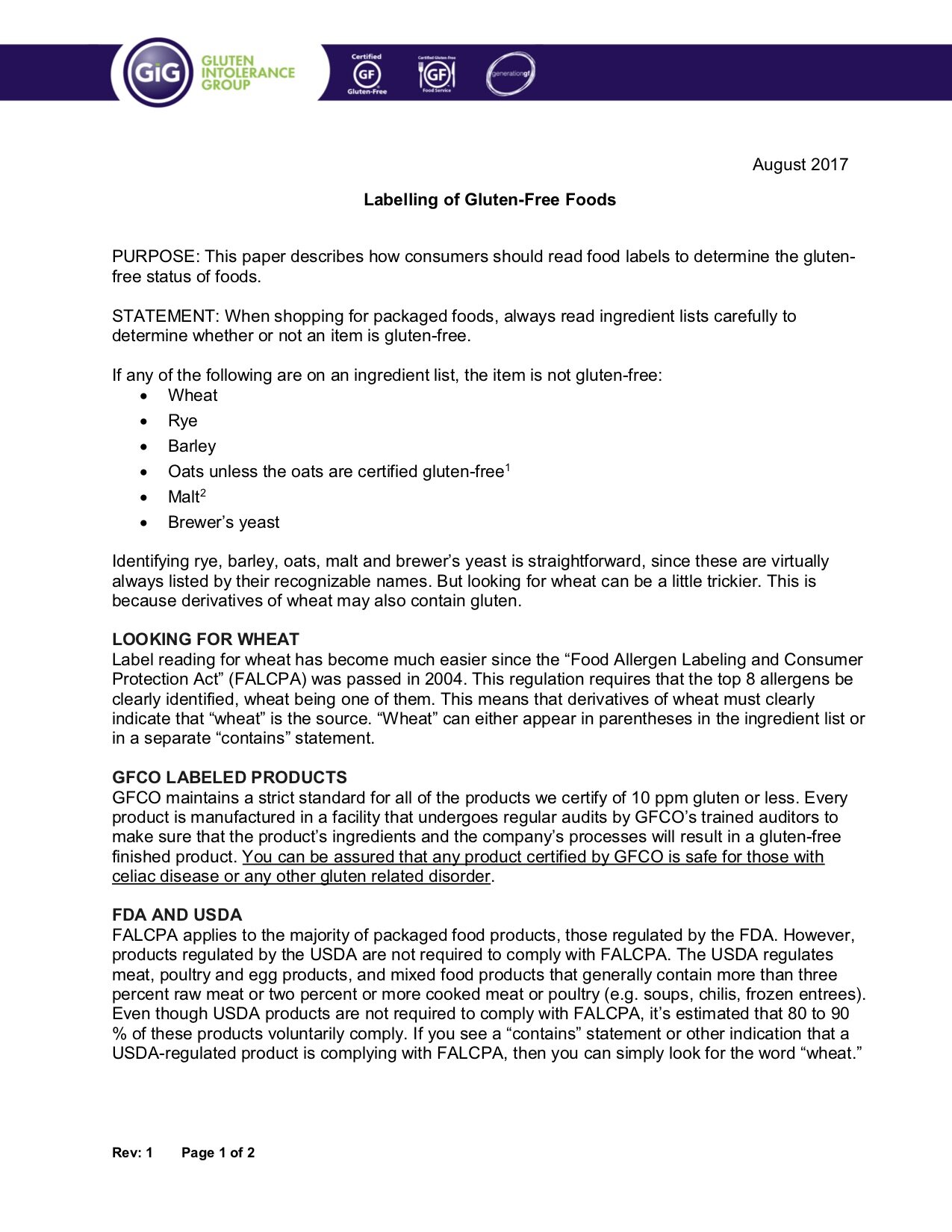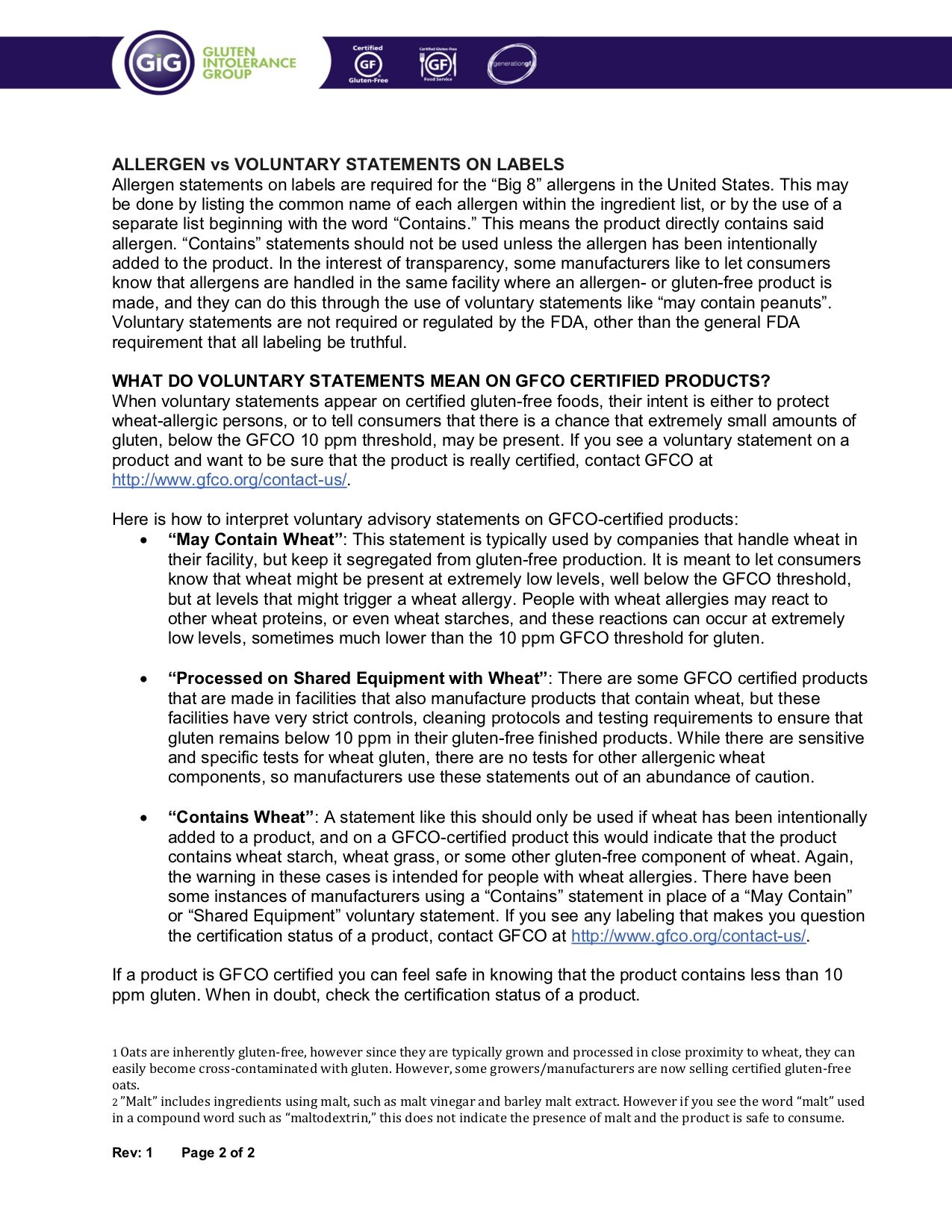Then, one day I looked closely at a label and saw that it had the “Certified Gluten Free” label as well as the “manufactured on shared equipment” phrase! What?!?
Label reading and ingredient investigation are necessary skills for those who need to be Gluten Free.
Label reading and ingredient investigation are such essential skills to stay healthy, that you’d think food manufacturers would do their best to make it easy for people to make confident Gluten Free choices. When I’m confident about a product and my family loves it, I’m super loyal and I tell my Gluten Free community about it. I want that product to be successful and stay on the shelves. The sad reality though, is that even when a product seems to be clearly labeled, it can still be confusing. I have spent hours, over the last 10 years, standing in grocery store aisles Googling product information and scanning barcodes with my GF apps. There is also a lot of time spent responding to texts/emails from very well meaning friends, family and teachers about what is safe for my daughter. No one wants to buy/give her something that might make her sick; their anxiety about safe food options and label reading is even higher than mine.
What makes me the most upset is when I find products that are falsely labeled Gluten Free. Maybe those manufactures are trying to capitalize on the growing requests for items to be Gluten Free and are not interested in the health and safety of their consumers. Hopefully the false labeling is more of a lack of knowledge about cross-contamination or cross-contact and what it takes for an item to be truly Gluten Free. Also, it seems, that the FDA’s labeling requirements and rules give manufactures a lot of freedom in their labeling practices; feeling more like a “good faith” promise than a rule. “We trust that you’ll make sure that you’re producing products that meet our less than 20 parts per million standard. And no, we won’t make you test it unless something comes up.” Regardless, all of this adds to the confusion and frustration that comes with label reading and living a healthy Gluten Free life.
From what I’ve gathered from longterm Gluten Free people, and from what I’ve seen over the last 10 years, the amount of good Gluten Free products has skyrocketed. Luckily, despite the loose standards of labeling something Gluten Free, it has only become easier to maintain a Gluten Free life. We can thank a few third party organizations for the increased ease of finding safe GF products. These organizations are fighting for rigorous testing of GF products, certification processes and clear and consistent GF labeling.
One group, the largest, has been around since the 1970’s, back when the general public had no idea what Gluten or Celiac disease was (it’s older than me). It began as a support group and has transformed into an organization that consistently advocates for the Gluten Free community. They do everything they can to support, educate and fight for clear labeling of Gluten Free food and products. The Gluten Intolerance Group (GiG) is responsible for the amazing “Certified Gluten Free” label that we see on everything from bread to shampoo. I love seeing that label, it makes my life so much easier. What I love, as well, is that they are in my backyard! I live in Seattle and their headquarters can be found a few miles south in Auburn, WA. I’m excited and proud that such a long standing, influential and pro-Gluten Free organization came out of the Pacific Northwest.
As my family has continued on this GF journey I’ve moved further and further away from buying products that come from shared machinery facilities. Not buying products that come from shared machinery gives me peace of mind, it takes away the need for extra research and there are enough Certified Gluten Free products that we aren’t missing much. My daughter is so reactive that I also don’t want to take the chance of her getting sick from poor labeling. I have to admit, that after I found the Certified GF label, I got a bit lazy in my label reading, only looking for the symbol.
Then, one day I looked closely at a label and saw that it had the “Certified Gluten Free” label as well as the “manufactured on shared equipment” phrase!
What?!?
I was so confused, I wasn’t sure what to do! Then I realized something, GiG has a contact page on their website! I can just write to them and ask—being curious has always felt better than feeling overwhelmed and confused; it has served me well.
The people at GiG responded to my questions. They are so kind, helpful and do their best to be transparent and educational. Here is my email exchange with them:
Original email from me:
“Hello,
I’m curious about what I should believe when I see your GF Certification label on food packaging that also carries the statement “made on equipment that also processes wheat (and other allergens).” Does the company that uses the shared equipment clean the equipment enough to earn your Certification? I’m feeling nervous and confused by the contradiction.
Thank you, in advance, for your thoughts and feedback.
All the best,
Anne Moon”
GiG’s reply:
“Hi Anne,
I can understand your concern about a “may contain” statement on a certified gluten-free product. GFCO certification does not prohibit the use of plants that also use wheat ingredients, but we do require additional extensive cleaning, testing and ingredient segregation to ensure that there can be no cross-contamination with gluten. The companies that use these statements do so out of an abundance of caution, and they are aimed at people with wheat allergies, not those with celiac disease. We generally recommend they not use them because they are misleading and confusing for consumers. See our attached white paper on labeling, which gives more information.
If you come across any specific products that you have a concern about, let us know and we can confirm their certification status.
Best regards”
(I thanked them for their response and asked if I could share the information with friends; which they replied “yes.” Since only my friends and family, might read this blog, I’m sharing it here. 😁)
Wheat allergy!
Since we don’t seem to have wheat allergies, I hadn’t thought about that issue. While Celiac is triggered from Gluten specifically, someone with an allergic reaction to wheat can be reactive to other parts of the wheat plant that might be present on the machines even when Gluten is not present.
Bottom line: the Certified Gluten Free label is safe for people with Celiac Disease. People who have severe (even anaphylactic) allergic reactions to wheat, should still be mindful of the shared equipment situation.
I love that my friends, family and I can keep trusting GiG’s label, especially since they don’t need to wait for my reply if they are in the grocery store trying to pick something out. I like the reminder about how being curious can help relieve my confusion and anxiety. And I really love how transparent, striving to educate and improve our GF lives GiG was and is.
Below are the sheets they sent me explaining the Certified Label combined with the Shared Equipment statement.
Manufacture labeling and label reading isn’t an exact science, unfortunately. I recommend that you always use your best judgement when buying and consuming something that is labeled GF. There are still cases when I find products labeled GF but are not Celiac Safe (But, I haven’t had that happen with something labeled with GiG’s Certified label). If and when mislabeling happens it is very important that we communicate the inaccurate information to the company and also share the experience with our GF communities; we need to look out and support each other.
Happy Shopping!
Disclaimer:
While we have nearly ten years’ experience of navigating the world as the parent of a child with Celiac Disease, we are not physicians, nutritionists, or other licensed medical professionals. The material and content contained in the Services is for informational purposes only and are not intended to serve as a substitute for consultation, diagnosis or medical treatment by a licensed medical professional. Please consult your doctor for any medical or health-related questions. The information contained in the Services should NOT be used to disregard medical or health-related advice from a physician or licensed medical professional.






